Blood has always been considered, in the history of ideas, the vector of a powerful magical force and the vehicle of a complex and varied symbolism, starting with the rock paintings dating back to the Paleolithic to reach the three "book" religions (Christianity, Islam, Judaism), passing through the cosmogonic myths of ancient traditions (Babylonian, Hindu, Norse, etc.), obviously without neglecting its use in traditional oriental medicine and its sacrificial value within ceremonial practices.
di Robert Eusebius
(review: Marco Maculotti)
cover: Toru Kamei
«I smell blood ... It will be the time of insane madness. "
- Wystan Hugh Auden
The blood, hidden and enclosed in the body of each animal is life, movement and instinct. Red, liquid, with a ferrous taste when it comes out, beyond the medical aspect it is something that smears and marks the world in a traumatic way. It becomes a fatal relationship when it ceases to be a reason for life and turns dry and dark at the end of its flow, with death. The phrase in the epigraph of the poet Wystan Hugh Auden that opens this study, in our opinion, indicates with great approximation what blood represents and symbolically entails in a devastating and overwhelming way when - and we emphasize it - it is profaned, that is, it is not respected in its essence of vital matrix.
In literature, it will be William Shakespeare, in Macbeth, to describe the crude madness of King Duncan's murder and the resulting final revenge with the death of Macbeth and the hallucinated madness of which Lady Macbeth will be prey [1]:
« Why blood, call blood! »
We will leave this dramatic aspect in suspense for a moment to initially turn our attention to the way in which blood, as a bodily element, was formerly considered, to reach at the end of the article the intimate traditional perspective of symbolic meanings and doctrinal precepts. .
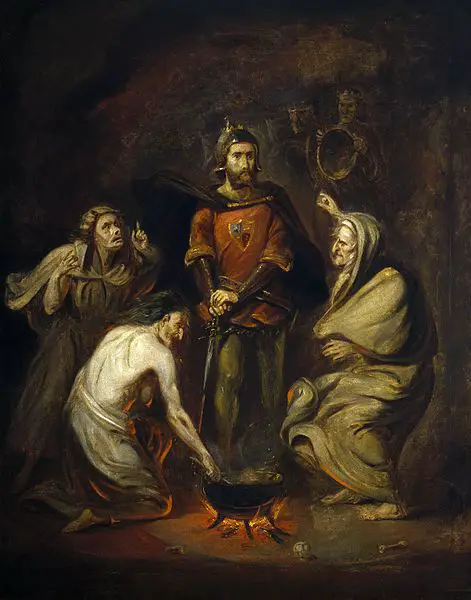
Blood has always, long before any physiological investigation, held a particular speculative interest, since it was understood that it influenced human attitudes, and because it has always constituted both a physical and a symbolic bond by its very nature. Will Diocles of Caristo [2] in the work Pathos aitia therapy to find correspondences of psychic pathology linked to blood, in particular the mania that through his writings, will be presented as the loss of sense due to blood boiling in the heart.
He was not the only one; according to Traditional Chinese Medicine, when a patient is in a strong state of anxiety or easily irritable, this constitutes the outward manifestation of a state of blood "deficiency". Blood for the Chinese is not simply a red liquid that circulates in blood vessels and carries nutrients to the organs within our body, but is considered one with the qi, the breath of life, which flows simultaneously within the body along with the blood. The qi represents its driving force, inherent according to the Chinese tradition in each individual.
In all known traditions and probably also those whose anthropological structures we do not know due to the epochal distance that separates us from them, if not for some rock engravings or graffiti, blood has always had a symbolic value and a powerful magical force and for this reason it has been used in the ritual field, both in material form and in mythologems as an archetypal element that refers to some primordial myth.

On the basis of this original belief, however universally recognized, in the ritual practices of many cultures, blood takes on without a shadow of a doubt a transferring role on which or through which the magical act is performed, whether it is used materially, or whether its presence is indicated by substitutive elements, but still attributable, in its potentiality, to its two aspects di life and death. This practice dates back, as scholars tell us, to a prehistoric era. Examples are, according to theories we think we share, le primitive cave paintings whose magical-symbolic purpose would be linked to shamanic rites, while the use, in the impasto of the paint, of blood would represent a way of fixing to the painted figure, through a sort of ritual simulation, the spirit of the animal [3].
In the heroic myths of Greek culture, blood appears to have been border between the world of the living and that of the dead, between order and chaos and its fatal gushing was one aspect symbolically nefarious. Let's be clear: blood is one of those archetypal symbols in which multiple levels of interpretation coexist. In Greek mythology itself, the blood of the immortals, Called Ichor (ἰχώρ, ichór), not red but an evanescent white, if it gushed from a wound it became lethal to mortals. In the Greek mythical tales, blood also seems to symbolically underline the stages of passage that man went through from the moment of his birth, to his maturation until his death.
Growth and evolutionary change, not only in the body of being, can only be a continuous sequence of death and rebirth, between the past and the future. In general, the Greek myth symbolically runs after a law of nature in its epic, Eros and Thanatos they represent the two alternating forces in which human life moves and manifests itself in a continuous process of evolution. Without Thanatos there is no Eros; without death there is no life [4]. This alternation in the Greek world seems to relate to the time of the origins where the gods manifested all things and mortal man from primeval chaos to order [5].
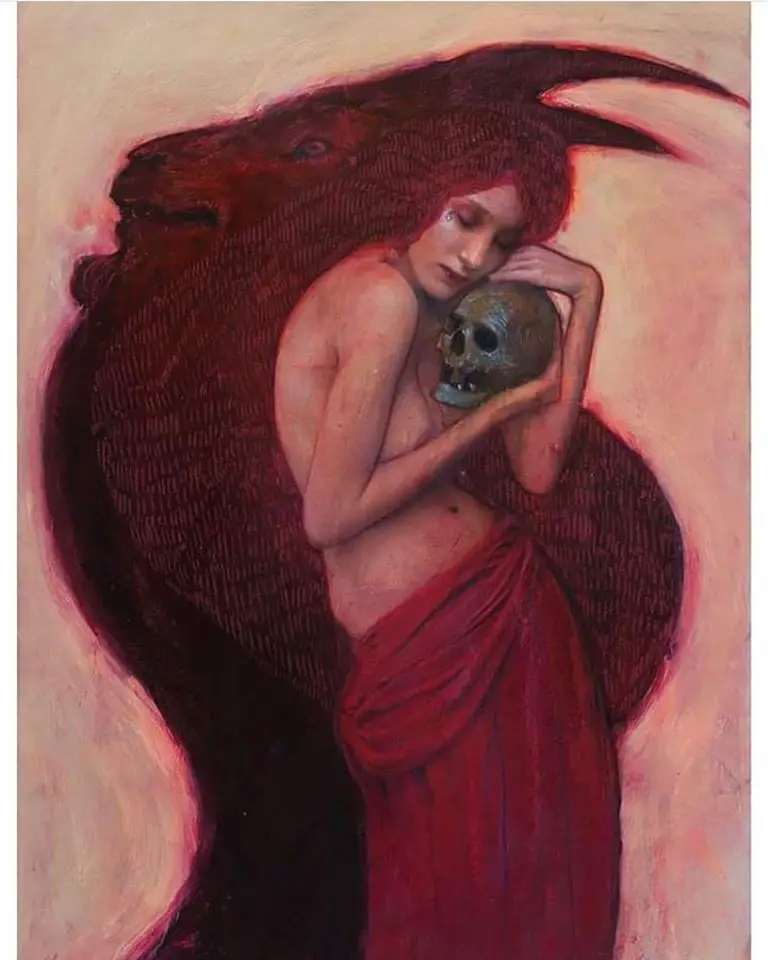
Going back into the dark and complicated seeds Norse il myth of Ymir, killed by Odin in Norse mythology tells us how through his blood and the dismemberment of his body the earth and the sky will be shaped.
"From the flesh of Ymir the earth was made,
from his blood the sea, the trees from the foliage,
From his eyebrows made the gods blessed
Miðgarðr for the children of men
from the bones the mountains; from the skull the sky.
from his brain all the storm clouds were created. "
It will not be the only cosmogony of this type: the bloody sacrificial act is a dominant motif of several cosmogonic myths. Creation is almost always the result of a violent crisis with the shedding of blood that fertilizes matter in a fight that will be favorable and ultimately good. Examples are the struggle or death between personal or impersonal forces, such as it dismemberment of Prajapati, narrated in the Hindu Vedas, or as in the Babylonian myth in which through the body torn to pieces Tiamat heaven and earth will be created and from Kingu's blood all the men.
The manifestation of the world therefore is always done through a sacrificial act induced or voluntary, which has its raison d'être in the superior creative act. Of a different allegorical sign is the blood that cruelly gushes out of a sacred ritual, in which it would be disciplined and would have its raison d'etre, while in the projection into the world of mortal humans it dangerously opens up gaps and unstoppable inferior forces that are difficult to control.
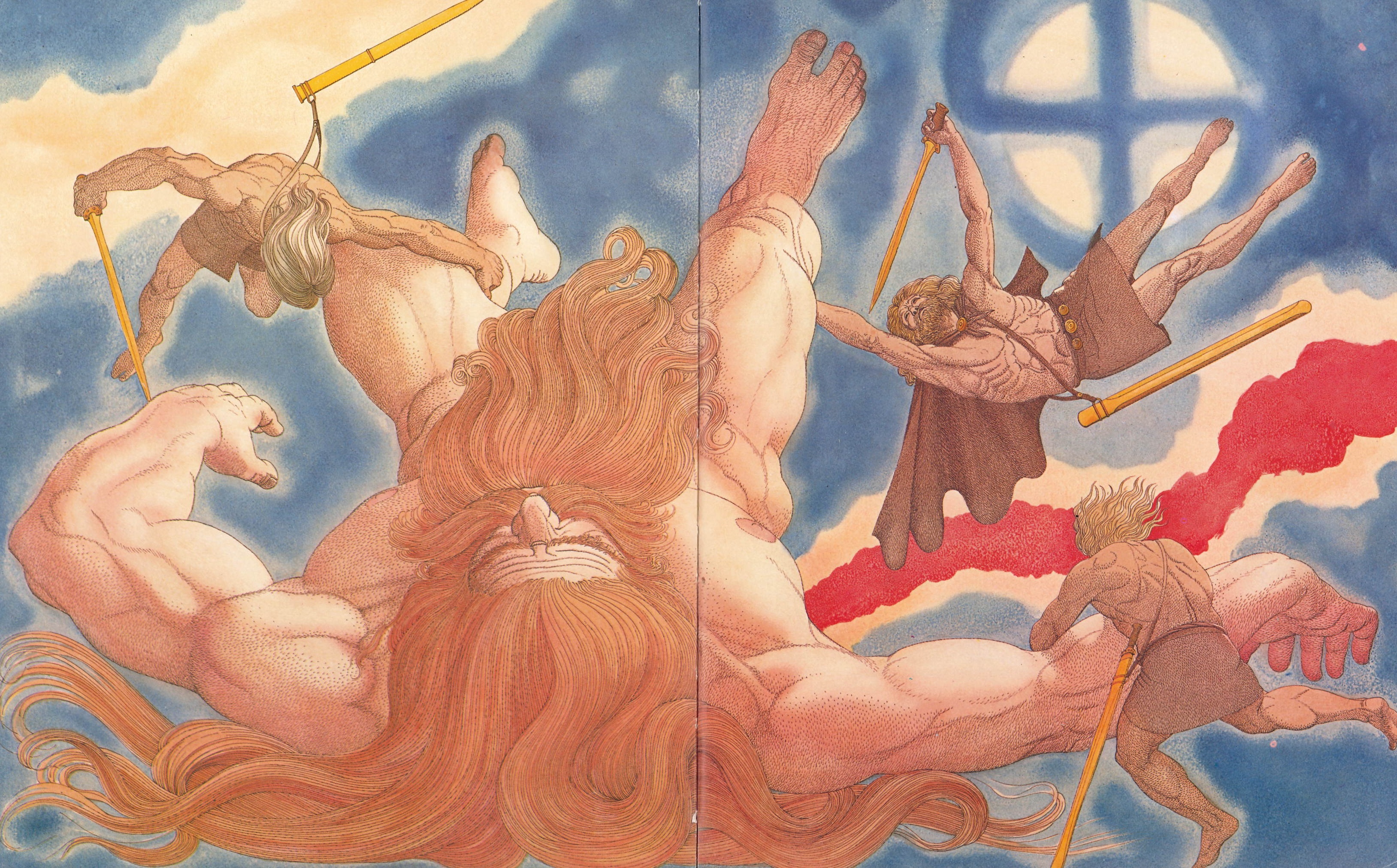
In the evolution of the religious spirit through the prehistoric epochs and later in historical periods, the blood will gradually take on a different and more structured value. THE cults related to Mother Goddess, which, according to the studies on the findings, would even date back to about 300.000-35.000 years ago (Middle Paleolithic) would seem linked to life-death-rebirth cycle. This cult would therefore represent an important and extensive testimony of a mystery current which lasted over millennia, in which the female image was assumed as a hierophany with a sacred value. This aspect is related to the fertility and period, CI was congruent with the primordial sacrifice of many traditions, allegorically linked to the universal creationist mythology [6]. It is the same mediator, representing the catalytic element between Principle and matter, that is, as we have seen, the nucleus of cosmos that will manifest itself through his symbolic sacrifice.
That said, blood is in many mythical tales motive for revenge, trial,initiation, of change and, as such, in the resulting social culture, it was governed by laws and prescriptions specific to each tradition. Il Christianity, if we start from the tradition close to us, but also Judaism, from which Christianity derives, they see blood as the seat of life and a means of atonement:
« Because the life of the flesh is in the blood. That is why I have ordered you to place it on the altar to make atonement for your people; because blood is what makes atonement, through life. " (Leviticus 17:11)
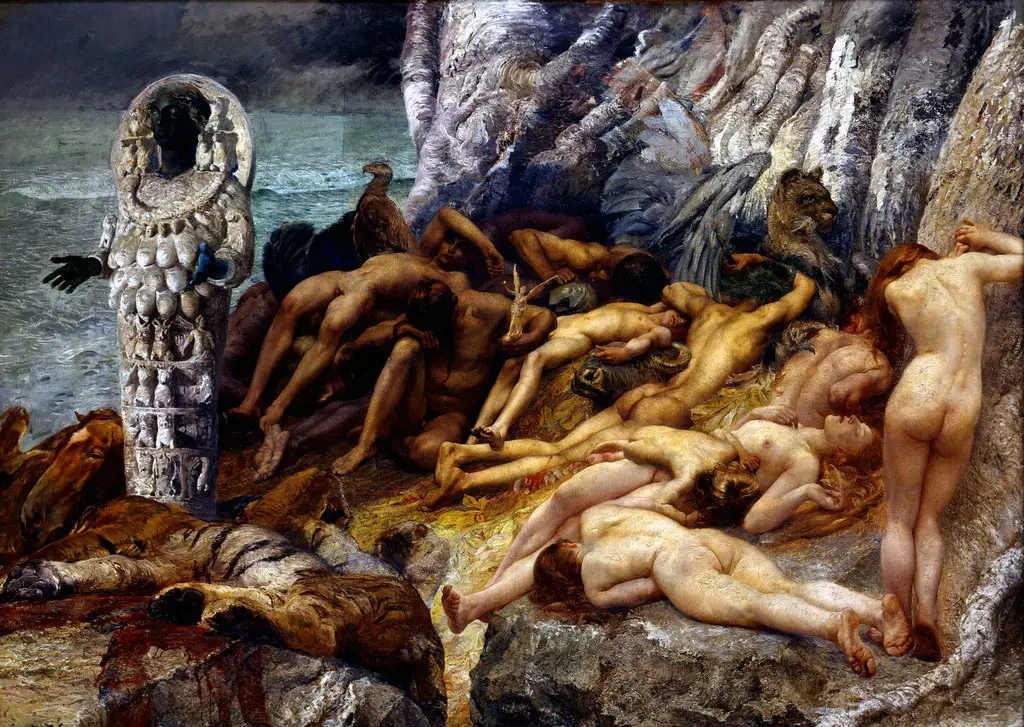
A passage from Exodus (24: 3-8) tells like Moses sprinkled the people with some of the blood of the sacrifices, signifying the covenant with God. It will be precisely the biblical law to specify that the blood of animals cannot be eaten but shed, while the blood of man must not be eaten or shed because it is the seat of life. [7].
Only the sacrifice of Christ he will transform, with the shedding of his blood, his immolation into symbolic instrument guarantor of the new covenant with the divine, thus restoring the eternal covenant. The myth will tell us how that blood gushed from the wounded side will be collected in the sacred cup of Grail which will be the basis on which the search for medieval knights will be founded. That blood will be the pledge of the new covenant which will be perpetually renewed in the Eucharist where the ban on "eating" blood will not apply to the blood of Jesus Christ since "whoever eats his flesh and drinks his blood has eternal life"(John 6,54). From a certain point of view it is the intention that distinguishes the qualification and the purpose, to the point of enclosing in the blood a powerful intermediary as a doctrinal motivation for which, according to Tertullian, the blood of martyrs is the seed of the Church, where death is clearly alluded to as the bearer of acceptable generating Christian vitality [8].
To a higher degree from a metaphysical point of view, blood constitutes one of the links of the bodily organism with the subtle state of the individual, which would essentially represent the soul, that is to say, in the etymological meaning the animating or vivifying principle of being. However, it is a fact that blood in every cultural form, as we have already mentioned, takes on a double meaning: fatal or propitious. According to this vision, blood is sacred since it represents the principle of life within the bodily limits and untouchable when, cruelly violated, it escapes from them. Whoever profanes it or is contaminated by it is an impure man and commits a sacrilegious act, and such is precisely the killing of another man and the shedding of his blood. [9].
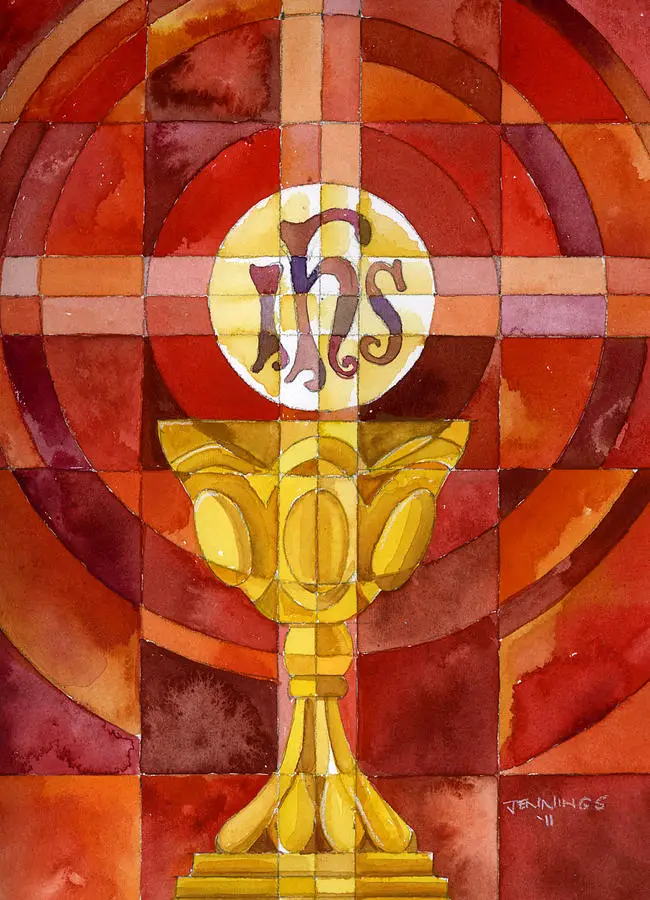
The concept of the sacred, in the spiritual development and in the conscious maturation of being in the various historical traditions, has transferred through strictly technical aspects the presupposition and the qualities necessary in order to the blood shed in the ritual moment of sacrifice can open and remain to configure a link between the human world and the divine. In Torah and said:
“Just be firmly resolved not to eat blood, because blood is the soul and you must not eat the soul with the flesh. You don't have to eat it. You have to pour it on the soil like water. You must not eat it, so that it will go well with you and your children after you, because you will do what is right in the eyes of the Lord your God. " (Deuteronomy 12: 23-12: 25)
However in the Torah it is further specified that blood being the soul, this has five degrees: Nefesh, Ruach, Neshamah, Haya, e Yechida. The blood represents the lowest part in the spiritual levels, precisely Nefesh [10] as a vital breath (lower soul) that animates the physical body. Only through the sacrificial rite, the shed blood that bathes the altar, is acceptable and pleasing to the gods, where on the other hand what is sacrificed it is purified by rising from the profane condition to that sacred. Therefore the word sacrifice from its etymology has the meaning of doing something sacred in order to to relate the sacrificed and the sacrificer to divinity.

But why does the divinity use the blood of a sacrificial victim shed on the altar to relate to man? Why does the god ask for the blood of a victim to manifest himself? In the Old Testament it is said: "Because the life of the flesh is in the blood. That is why I have ordered you to place it on the altar to make atonement for your people; because blood is what makes atonement, by means of life»(Leviticus 17:11). From which we deduce that the sacrifice understood as the shedding of blood, the seat of life, is the oblation that cancels and cancels sin and allows the return to the condition of grace and at the same time technically puts the faithful in relation to God.
It is the priest in union with God and by his hand who, through the sacred act, sets precise boundaries to the power of the blood, channeling its potential. So what operation is being carried out? We do not think we go too far by saying that such practices fall under what is called "Ceremonial magic" [11] which was the basis of the rites of all traditions whose origins are lost in the mists of time and which involves among other things the knowledge of magic of the word, in particular when the language of recitation and ritual formulas is based on a sacred language [12]. They are understandable at this point, taking up the discourse at the beginning of this article and based on these theories, the various traditional prescriptions to abstain from blood which therefore all appear to be legitimate.
But some others need to be taken into further consideration principles seen through the investigation of myths e legends on which the roots of conceptuality are based of the denial of its shedding and of its possible abuse. In Italian the root "emo"Indicates the word blood, which derives directly from the Greek"loved”, Which, precisely, means blood. Precisely because of its aspect as a soul vehicle, the blood would therefore contain the most sensitive aspect of the individual including his positive or negative emotions.
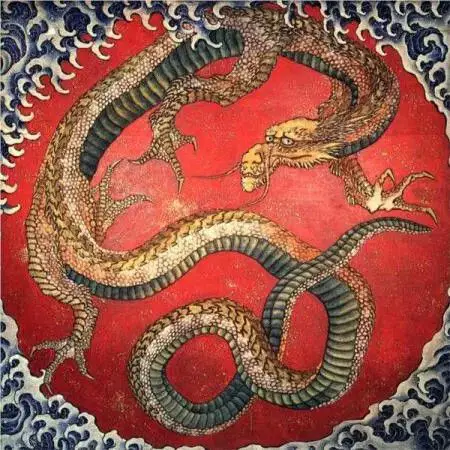
In Japanese culture, In Shintoism, native tradition that is formed in the Jōmon period (10.000-3000 BC), the blood takes on a notable negative value, rising to a distressing sign [13]. "In the Shinto rites, purity, much more than faith, is the essential condition for coming into contact with God and only the objectively pure man who complies with the sacred prescriptions in all moments of daily life, is in harmony with himself and with the nature of the gods. Impurity, on the other hand, makes it hateful to the gods. His contamination spreads evil throughout the social group. And so the blood is surrounded by a sense of horror, of repulsion " [14]. However, there is no moral horror or illicit sin in these prescriptions.
In reality the blood in the veins flows like the water contained in the riverbed. The blood that is shed is therefore like water that overflows in a disordered way from its banks, becoming chaos. The impurity that comes from giving in to the passions or imposing one's self by corrupting the harmony of being is always accompanied by blood. In the same tradition, all those who had to do with blood: butchers, leather tanners, executioners and the like were considered unclean, a prescription this similar in many traditions. These consequent aspects should make us think, as we mentioned before, that blood in its various possibilities is an unstable element and should be treated as such.
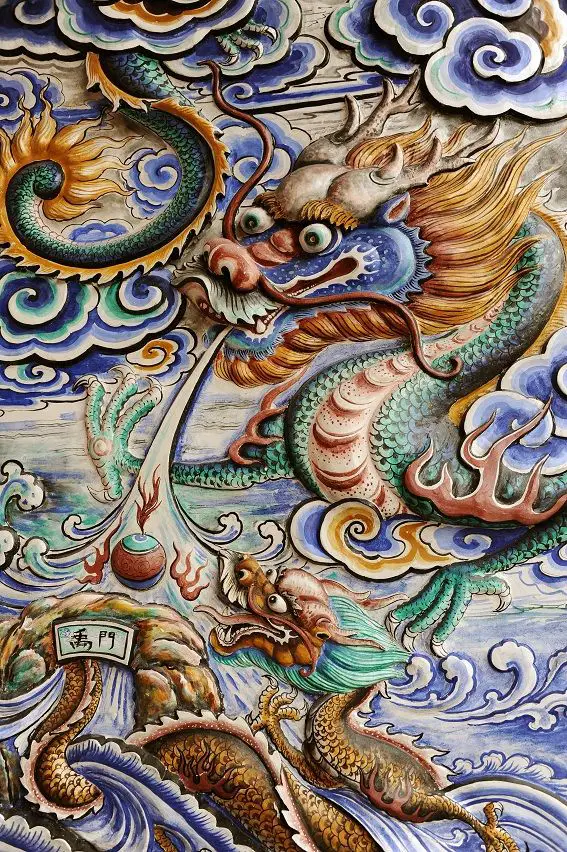
According to Traditional Chinese Medicine when a patient is in a strong state of anxiety or easily irritable, this constitutes the outward manifestation of a state of blood deficiency, during which the foundations of the shen, which enclosed in the blood becomes unhappy and restless. However, in the Eastern world and in the myths of East Asia, the myth of dragon, whose blood has a precise reference to immortality, becoming a drink of immortality that allowed one to understand the language of birds or the "angelic language", since birds are often symbols of angels or higher states of consciousness.
But in China, a geographical area full of contradictions, the sale, for economic reasons, of one's blood as a medical remedy used by the less well-off classes was also known, despite traditionally blood was synonymous with family identity, to the point that those who sold their blood were no longer considered worthy to be part of their family. In the'Ancient Egypt red, the color of blood, had predominantly negative values as it is linked to Seth, slayer of Osiris, who had red eyes and hair; And if on the one hand red is the color of sentiment, of expansiveness, of vivacity, of blood understood as life, on the other it is the color of violent action, anger, aggression, bloodshed.
There are innumerable myths that deal with the ambivalent faculties of the blood: one of these is the Greek one of Medusa and its killing by Perseus: once the monster's head was cut off, the blood that gushed from the left vein proved magically capable of killing, while the one that came out of the right vein gave the dead life back. In the Norse tradition we can quote, taken from theEdda Scandinavian, the story of Siegfried fighting the dragon. Leaving aside the different phases of the legend, what interests us here is that, once the dragon was killed, Siegfried bathed in his blood which made him invulnerable, while wetting his lips he obtained the ability to understand the language of birds and know the secrets of the sky, similarly to the belief in the Chinese tale tradition. Also in this case the dragon's blood, according to the myth, represents the knowledge of which the dragon is the guardian. However, the drink of immortality or knowledge is such only for the predestined hero: alternatively it turns into poison.
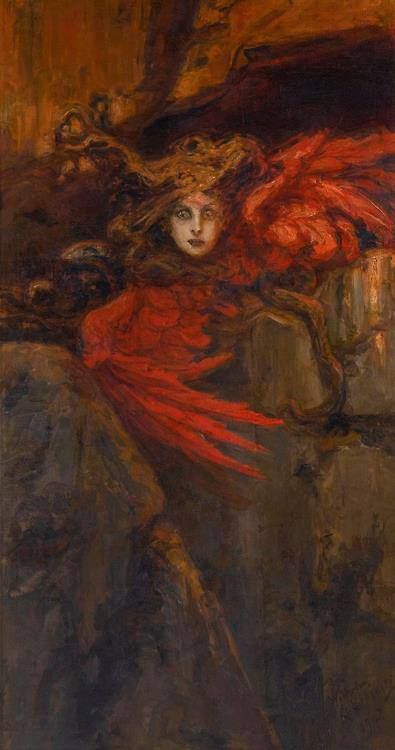
In 'Islam, according to Koran [15], it is forbidden to eat animals if they have not been slaughtered according to the Dhabiha rite, that is to say slaughtered by a Muslim, through the clean cut of the throat, which cuts the trachea and jugular veins with a single blow, after having pronounced on the beast the name of Allah. After slaughter, the blood must be completely eliminated. There Feast of the Sacrifice (Eid al-Adha) is celebrated every year in the lunar month of Dhu l-Hijja, the last lunar month of the Islamic calendar which commemorates Abraham's obedience to God's request to sacrifice his son.
The ritual involves the recitation of the Takbir by a man and the subsequent slaughter of the animal. From which it must be deduced that the spilled blood is contemplated as an effect within the necessary and legitimate rite. The norm it affirms is different and not easy to interpret, as regards the dissection of corpses and its prohibition, which bears witness to the writings of the doctor and jurist Ibn al-Nafīs (d. 687/1288). He writes in the Šarḥ tašrīḥ al-Qānūn (Commentary on the anatomy of the Canon) [16], that he adhered, as regards the practice of dissection, to the prescriptions of religious laws.
On the other hand it was the Prophet himself to say: "The Muslim is a brother to the Muslim, he does not betray him and does not lie to him; every Muslim is sacred (harâm) to the Muslim in his honor, in his money and in his blood» [17]. It is still the same prophet who formulates the prohibition against desecrating the bodies of fallen enemies as one would be stained with grave guilt [18]. However Arab doctors have been attributed some autonomous discoveries in the field of anatomy, which suggests that these doctors have operated outside the Qur'anic precepts or more generally outside the Sunna.
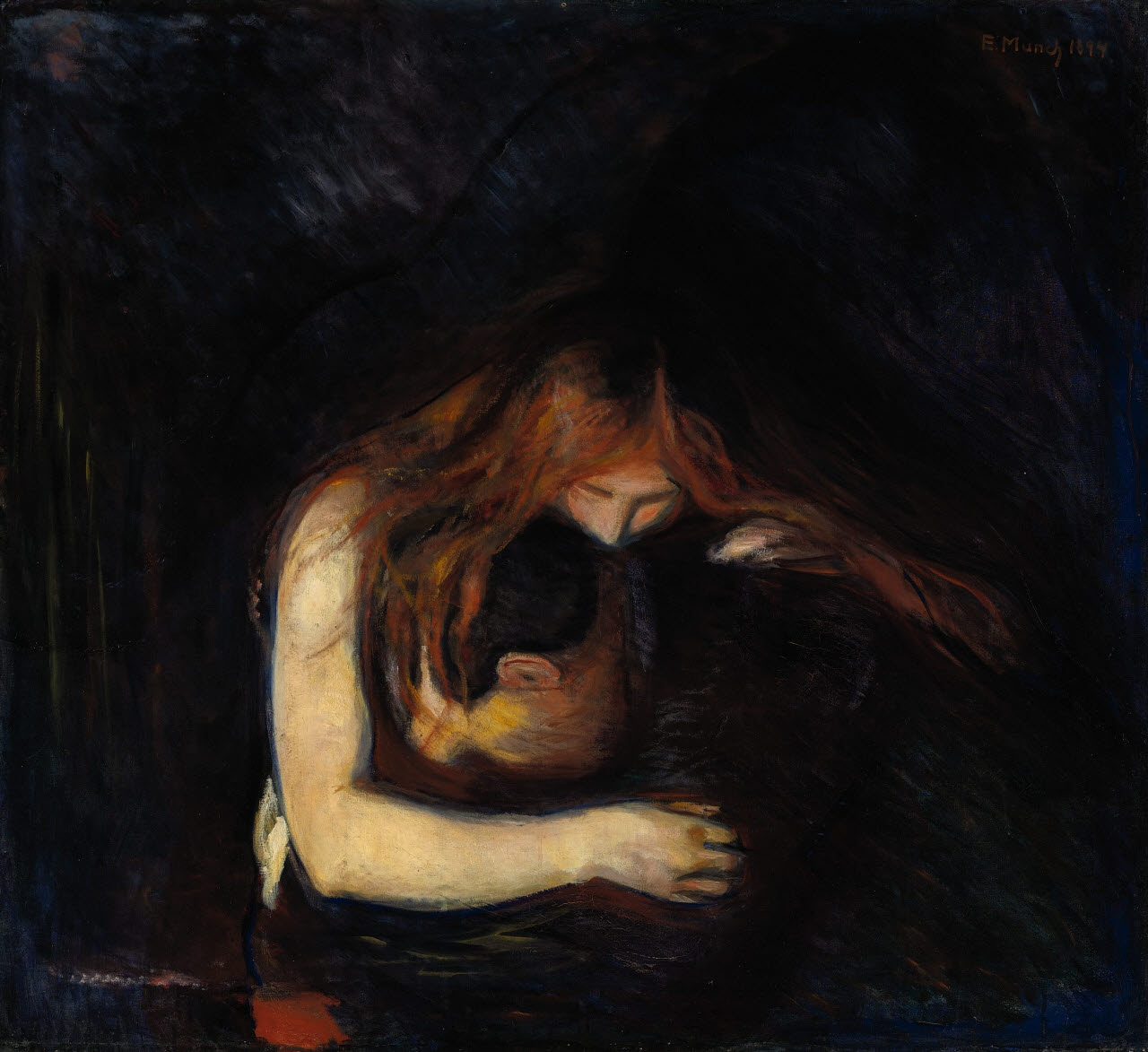
Having said that, there remains an aspect that we have kept for last and that we take from folklore but which is deeply inherent in the superstitious substratum of many populations: it is the vampires. Popular superstition considers them mythological beings who survive thanks to the possibility of eating the blood of their victims. The beliefs and stories about such beings (vampires, werewolves and witches) date back to very ancient times. In Celtic culture are cited on dear-dulg , lamia Irish while in the Scandinavian there is the draugr. In ancient Rome some tombstones and even more the writings of Ovid, Virgil and Petronius and others, testify to the fear and dismay for such disturbing beings.
In Greece and Macedonia these beliefs will develop imported from Slavic superstition, without forgetting Germany with the three varieties of vampires: thealp, il bloodsucker and Nachzehrer. In Russia with theupyr. While the traditional Portuguese vampire is the witch, with animalistic features and particularly fond of children. The popularity of such beings has always survived creeping into the deepest folds of popular superstition. It will be the novel The vampire by John Polidori (1819) to revive such beliefs and to open a literary current which seems, according to historians, to have given voice to a characteristic anxiety of the Victorian era. But vampire beliefs are the heritage of almost all cultures: China, Malaysia, India, Japan up to native America have a rich tradition of vampire tales.
Once again in the popular imagination it will be blood in its dual aspect - death or curse of the victim and life of the vampire - to characterize the blood in his substantia mystery. Here the blood could only be linked to another double mystery inherent in not dead. The vampire, in any case, identifies with evil and the negative sexual image, satiating himself with the virgin vitality of the other. It is a sort of unconscious transfer where, not recognizing the evil in the depths of one's soul, one identifies it in the blood-sucking monster, after all it is the eternal fear of death and beyond. It is the eternal inner struggle not to give in to the death of the soul, made up of fear, torment, anguish and depression. and for this one's blood becomes someone else's means of life, of an undead who infects and transforms his victims into as many vampires. Once again, blood is the binding element, where it becomes an evil means of subsistence of evil.

Note:
[1] In this regard, the numerous phrases and idioms that refer to an altered situation come to mind: make the blood go to the head; become bitter blood; written in letters of blood; wash in the blood, etc.
[2] Diocles of Charistus (375 BC - 295 BC) was an ancient Greek physician who lived in the XNUMXth century BC
[3] The use of blood in the pictorial mixture does not seem to be reconnected to its colorimetric characteristic, since the natural oxidation would have changed it in a short time. In fact, the red coloring, when it was needed, comes from much longer lasting ferrous oxides in their fixing process. The spectrochemical analysis has ascertained the use of mixtures of red and yellow earth, animal fat and blood.
[4] One of the symbols linked to the continuous becoming is the ouroboros, the snake that bites its own tail: ithe power that devours and regenerates itself, the universal energy that is constantly consumed and renewed. We are no longer those of yesterday while we become what we will be tomorrow.
[5] Myth of Cronus castrated by Uranus. From her member thrown into the sea Aphrodite was born, while the drops of her blood that fell on the ground fertilized the earth, giving life to the Erinyes, the Giants and the Apple Nymphs. The same myth of Hercules tells us how his sacrifice on the pyre of Mount Eta, after the twelve labors, will make him immortal among the immortals.
[6] The woman, beyond her role, in prehistoric families, seems to have been considered, through the pictographic symbolic imagery, a mystical figure symbolically linked not only to procreation but identified as a cosmological symbol or to the gestation and birth of the world. Furthermore, on this level of reasoning and venturing a hypothesis also on the re-birth and becoming of the human being through an action of sacred-initiatory transmission.
[7] Genesis 9: 4. After the Flood, God gave Noah and his family permission to include animal meat in their diet but commanded them not to eat blood. He said to Noah: "Only you must not eat the flesh with his soul, his blood"; Leviticus 17:14. “You must not eat the blood of any sort of flesh, because the soul of any sort of flesh is his blood. Anyone who eats it will be cut off ”.
[8] However, this idea will be condemned in various writings since sacrifice is not what God desires of man: Gospel of Matthew IX, 13; Book of Hosea VI, 6; Augustine of Hippo. Etc.
[9] The same hunt for primordial man had to take place in compliance with some ritual practices; actions and rituals essential to the success of the real hunt without causing outrage and offense to the god of nature but also to the animal. Where the rite provided for the mediation between man and animal which in the context assumed a sacrificial value as a voluntary gift. The animal was therefore a voluntary victim, offering its flesh and blood to men to eat (according to a Blackfoot legend).
[10] In Hebrew the word Nefesh does not indicate the soul but as it is written in Genesis, "the living being" with all its individual characteristics or with the overall set of what characterizes the human being.
[11] The terms we have used (Ceremonial Magic) do not satisfy us because they trigger a series of inferences that we do not share, but we have not found other terms to indicate such actions.
[12] To sacred languages are still attributed virtues that the vernacular does not have, they retain characteristics that have generally been unfortunately abandoned in the loss of consciousness of the sacred. In ancient Egypt, hieroglyphics represented sacred writing with hieratic writing. The Egyptians themselves called them "medw nether", "powerful words" or "divine words". They were convinced that some formulas were capable of making even inanimate images come alive. For the Hebrew mysticism, the Hebrew language would be composed of those same sounds through which God would have created the Universe, crystallized in the corresponding graphic signs. Kabbalistic thinking amplified the biblical and midrashic notions that God brought about Creation through the Hebrew language and through the Torah, into a complete linguistic mysticism. The Hebrew name of things is the channel of their life force, parallel to the Sefirot, so concepts such as "holiness" and "mitzvot" embody the divine ontological immanence. The concept is very close to that of the "Strepitus Verborum" of Latin rhetoric. It is a fact that the harmonious relationship, the harmonic vibration, even that of the word, deeply affect our body, in particular our psyche, it would represent a sort of enchantment, where the vibration leads to a very deep concentration. Two great Greek philosophers like Pythagoras and Plato defined it as a science that had to enrich the soul. They attributed an educational function to harmony, like mathematics, because it was underlying the science of rhythm.
[13] In the psychoanalytic field, anxiety is seen as a catastrophic situation, such as to undermine the ego's ability to control and manage the pressures of the world around and within us.
[14] Massimo Raveri. “Blood and purity in Shinto"
[15] Quran, Sura 2-173
[16] "The practical exercise of anatomy has been forbidden to us by the prescriptions of the religious law [al-šarī῾a] and by the human piety inherent in our character. Therefore for the knowledge of the shapes of the internal organs we will stick to the observations of those who before us have practiced the practical anatomy; we refer in particular to Galen, since his writings are the best that has come down to us on this art and since in addition to this he gives us news of numerous parts of the body that had previously escaped to observation. Consequently for the knowledge of the shapes of the internal organs, their position, etc. we will rely mainly on Galen's theories, with the exception of some points, for which it can be assumed that they are errors of the copyist, or that Galen's conclusions are not based on a sufficiently careful observation. However, as far as the usefulness of the individual organs is concerned, we will abide by the requirements of an in-depth investigation and careful study, regardless of whether or not this agrees with the opinion of our predecessors. " Šarḥ tašrīḥ al-Qānūn.
[17] See al-Tirmidhî (d. 279/892), Jâmiʿ, kitâb al-birr wa-l-sîla, no. 1846.
[18] The question arises spontaneously: to what obedience are those who in the so-called current holy war profane the body of both their enemies despite belonging to the same religion but of other descendants, or of the so-called unbelievers, with the cut of the head?
Bibliography:
ANGELA CERINOTTI. Atlas of the myths of ancient Greece and ancient Rome. Giunti Editore, 2000
GIROLAMO FILORAMO (edited). Dictionary of Religions, Jewish Sacrifice. Turin, Einaudi, 1993
A.AMADI (edited). Misterium Sanguinis. Symbolic and therapeutic values Proceedings of the national conference. AVIS. 1998
ERIC R. DODDS. The Greeks and the irrational. Milan, Rizzoli, 2009
CHRISTIAN JACQ. The secret of the hieroglyphs, Piemme, Casale Monferrato, 1997
ROY BATES. All about Chinese dragons, China History Press, 2007
ALESSANDRO BAUSANI. Islam, Milan, Garzanti, 1980
JULIA KRISTEVA. The head without the body. The face and the invisible in the imagination of the West, Donzelli Editore, 2009
GIUSEPPE FERRARI and TORELLO MONSAGRATI. Psychiatric disease between East and West, FS Editions, 1997
JAN N. BREMMER. Ways of communication with the divine: prayer, divination and sacrifice in Greek civilization, Deutsches Archäologisches Institut Meldungen. Berlin, 1996
MARIO BARZAGHI. The myth of the vampire, Rubbettino Editore, 2010
MAXIMUM INTROVIGNE. The lineage of Dracula: An investigation into vampirism from antiquity to the present day, in Anthropology. Mondadori, Milan 1997
GIAN MARIO MOLLAR. The mysteries of the Far West: Unusual, macabre and curious stories from the American frontier. Il Punto d'Incontro Editions, 2019
JOHANN CHAPOUTOT. The law of blood. Einaudi Publisher, 2016
PAOLO LOMBARDI AND GIANLUCA NESI. Blood and soil. The esoteric roots of the Nazi New European Order. Under the banner of Giglio Editore, 2016
GIACOMO SARTORI. Sacrifice, monograph, National Central Library of Florence. Pe quod, 2008
THE BIBLE. And Paoline. Rome, 1974
THE TŌRĀH. The five books of the Tora, http://www.torah.itPublished. 2017
THE QURAN. Ulrico Hoepli Editions, 1972

A comment on "Blood Metaphysics"